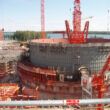Current nuclear technology isn’t a cost-effective solution to U.S. energy, climate change, and security needs
By Thomas B. Cochran, December 10, 2008
Miles Pomper and Stephen Goldberg have made several good suggestions regarding how the Obama administration should focus its nuclear energy efforts–i.e., encouraging developing countries that are considering nuclear power to forgo proliferation-sensitive uranium enrichment and spent fuel reprocessing facilities; using enhanced computer simulations to develop and qualify advanced high-burnup nuclear fuels for existing reactors; and promoting “smart grids,” plug-in hybrid vehicles, and electric vehicles.
If we’re serious about mitigating climate change, however, we will need to ensure that federal energy policies are economically efficient and that federal investments supporting demand- and supply-side programs and technologies are prioritized–with the highest priority given to those technologies that can provide early carbon offsets at the least cost and risk to the environment and international security. The most economically efficient way to mitigate climate change is to establish meaningful limits on greenhouse gas emissions, such as capping carbon emissions and then letting the demand- and supply-side alternatives compete on a level playing field.
If there’s an appropriate role for federal support, it isn’t to subsidize a politician’s favorite technology. Instead, it should:
- reduce the cost of promising emergent technologies in a way that increases market acceptance, thereby enabling capital investment at a level sufficient to realize economies of scale in production, which would drive down subsequent unit cost and outgrow the need for subsidies (such as production or investment tax credits that encourage suppliers to invest in more efficient production technologies);
- invest in research and development with long-term payback periods that typically don’t attract private investment.
The nuclear reactor technology that would be used in next generation reactors (dubbed Gen III+) doesn’t meet either of these criteria. The reactors are too large, too inherently costly per unit, and too difficult to deploy in large numbers to reasonably expect that production or investment tax credits would help them to surpass some cost threshold and lead to economies of scale in their production.
Indeed, the history of nuclear reactor build rates and cost shows no such relationship. Nor are these Gen III+ reactors sufficiently different from existing nuclear technology to qualify for federal long-term research and development support.
Government support for this technology simply subsidizes the deployment of high-cost units that have little immediate prospect of contributing to economies of scale that would lead to significant reduction in the cost of subsequent units. Such subsidies can in fact discourage innovation, by keeping technologies in the marketplace that otherwise would be passed over in favor of more cost-effective solutions.
Topics: Nuclear Energy
Share: [addthis tool="addthis_inline_share_toolbox"]














